How to grow geums like the professionals do – for a tangerine perennial pop anywhere in your yard
Everything you need to know about how to grow these optimistic little perennials in your garden
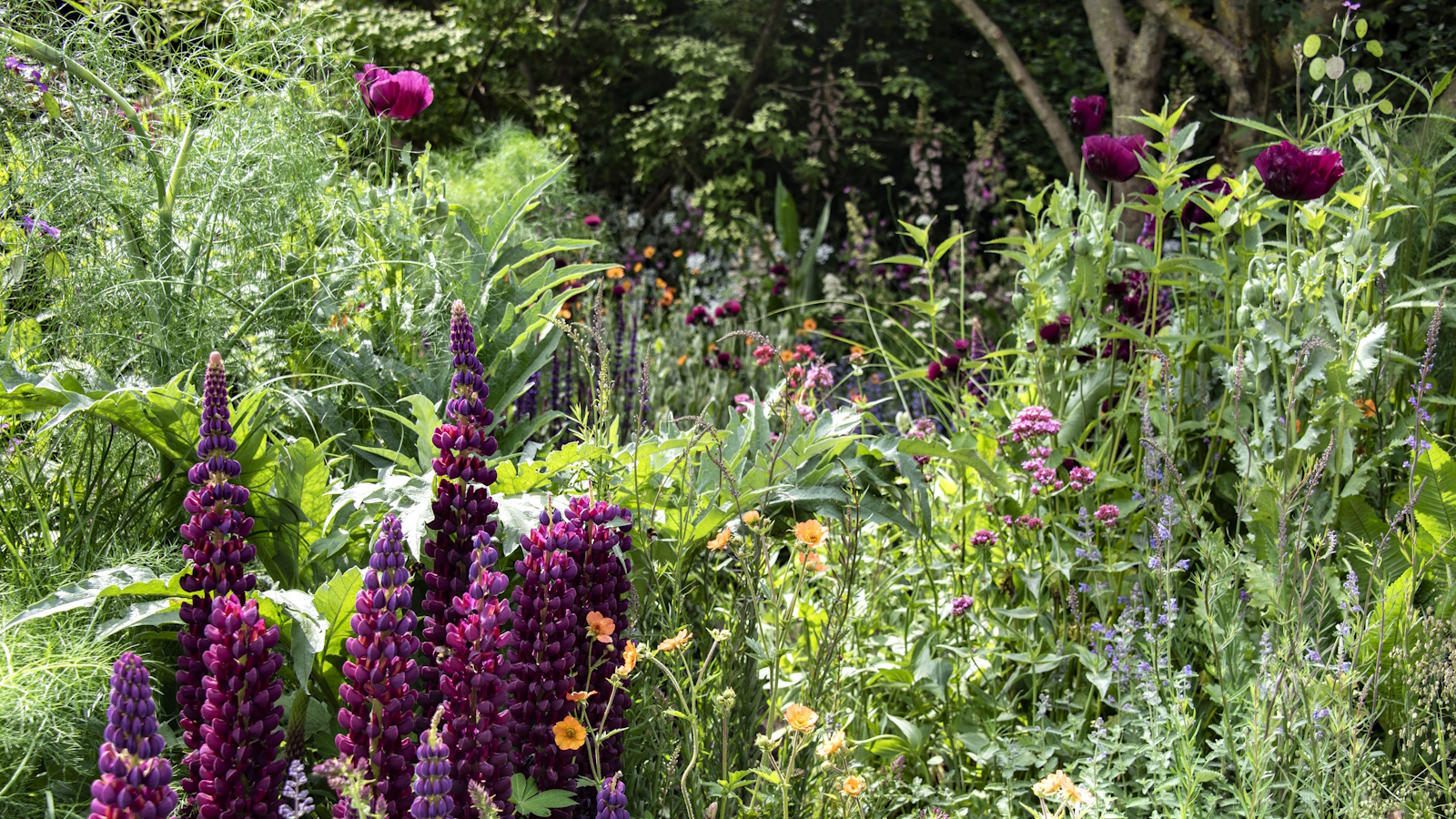

At this year's Chelsea Flower Show, geums seemed to upstage all other flowers. By my reckoning, Geum 'Totally Tangerine' appeared in most, if not all, show gardens, becoming quite the it-girl for 2025 and beyond. Whilst geums have always been one of the best cottage garden plants and have long held their place in the garden design canon, for those of us with a finger on the pulse of gardening trends, it has been impossible to ignore that geums are all the rage.
They're known for their incandescent orange, yellow, or red flowers, just as at home spilling out of summer pots as in a flower border. If you're looking for blousy, ethereal cottage garden ideas, plant a superfluity of these whimsical little flowers, and you will achieve the desired effect. Whilst there are many different cultivars all with slightly differing needs, on the whole they're tremendously biddable plants with wants and needs that are easy to provide.
Most geums flower prolifically, cross-fertilise readily, and return year after year even stronger and more vivacious than before, so long as you take heed of expert advice. Here's everything you need to know about how to grow geums and the best varieties to grow.
Where to grow geums in the garden
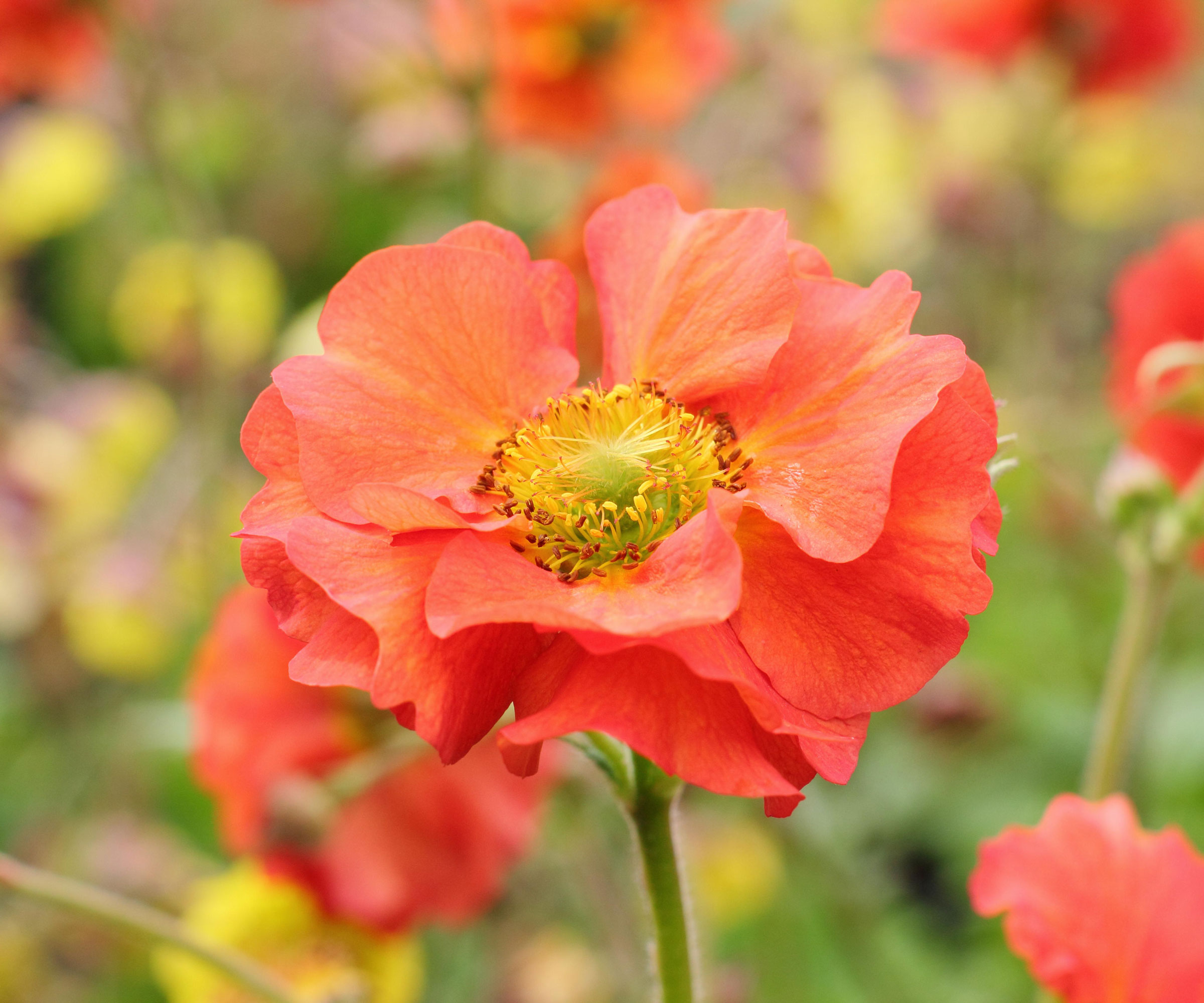
The beautifully bright and bold Geum 'Scarlett Tempest'
Geums are remarkably easy to grow once you know how. Planting geums in the spring is best, as it allows the plants to establish their root systems.
Firstly, establish your soil type – geums thrive in well-drained soil and do not like to have soggy roots, as this very often leads to root rot. Well-draining soil would be ideal, but if you're worried your soil is too claggy, add composted seaweed or calcified seaweed conditioners, like this organic calcified seaweed conditioner available at Amazon, which will improve drainage. It is best to plant Geums in the spring or summer, when the ground is not dry or frozen.
Geums like gentle sun and enjoy partial shade for some relief from the blazing sun. If you can, pick a spot that receives dappled sunlight. A strikingly hot south-facing border would not be suitable, nor would a dark corner drenched in shadows.
'Geums are happiest at the front or middle of a bed where their colorful blooms can be appreciated,' says plantsman Alex Kantor. They also work superbly in pots, so they are certainly one to add to your container gardening ideas.
Design expertise in your inbox – from inspiring decorating ideas and beautiful celebrity homes to practical gardening advice and shopping round-ups.
In terms of companion planting and selecting those plants that will be happy bedfellows with your geums, they will look strikingly beautiful amongst any cottage garden plants. Abundant planting and a mass of flower forms, textures, and colors define a cottage garden, so it is about bountifulness, not reduction, so bear in mind to be a 'generous gardener' and it will always look beautiful.
'Geums pair beautifully with grasses, salvia, or geraniums due to their similar requirements,' adds Alex.
How to grow Geums that flourish
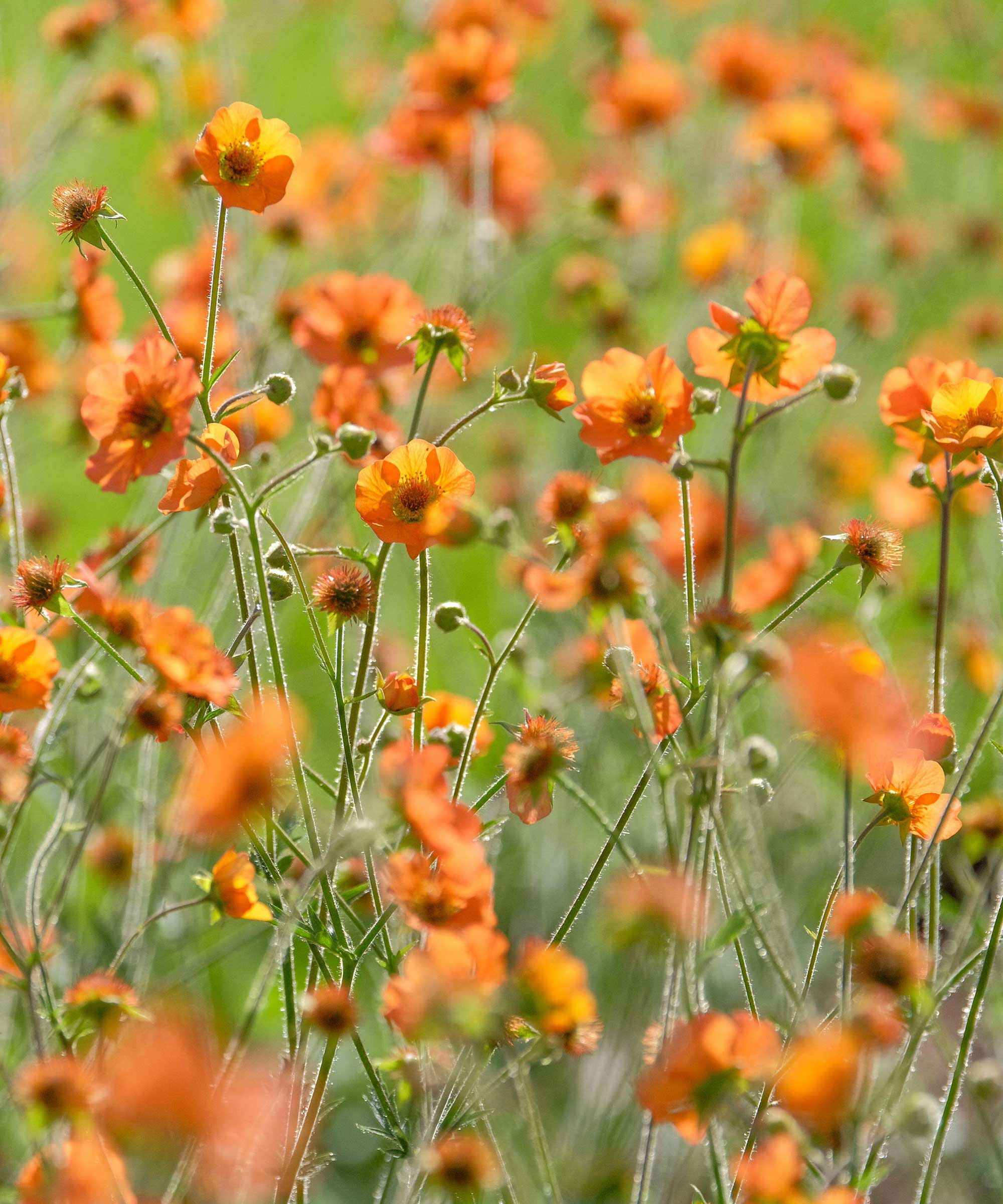
The increasingly popular Geum 'Totally Tangerine'
Here are our top tips for growing geums that will flower their socks off through spring and summer.
- Get watering just right. 'Some of the cons to geums are their lack of drought tolerance and root rot in overly wet conditions,' explains Alex. 'You have to get the watering down just right to have them thrive.' Yes, keep them hydrated, but never soaking wet. The rule to keep in mind: keep the soil slightly moist but never, ever waterlogged.
- Fertilize geums in spring. 'Geums aren’t heavy feeders, but they do benefit from a spring application,' explains Alex. 'A slow-release fertilizer is best applied in the spring.' An enriching plant food like this fertilizer is available at Amazon, would be ideal.
- Don't forget to deadhead your geums. Regular deadheading all spring and summer long extends the bloom season significantly. Simply take a pair of garden snips, like these lightweight gardening snips from Amazon, and remove any spent blooms as soon as you see them.
- Divide the geums every few years. 'Regular division every few years will keep clumps strong and flowering well,' explains Alex. If you're wondering how to divide plants, simply physically divide them every two or three years, which keeps Geums in better health, as it reduces congestion, helping them to stay vigorous. Indeed, some geums become unproductive after a few years if you do not divide them. Wondering when to divide plants? Summer-flowering perennials like geums are best divided in the fall, before the harsh winter weather sets in.

Alex has worked in the horticultural industry for over 20 years and grew up on the farm since his childhood years. Alex is an expert on landscape trees, shrubs, and indoor plants. He is passionate about growing and helping others learn the trade.
How to grow geums from seed
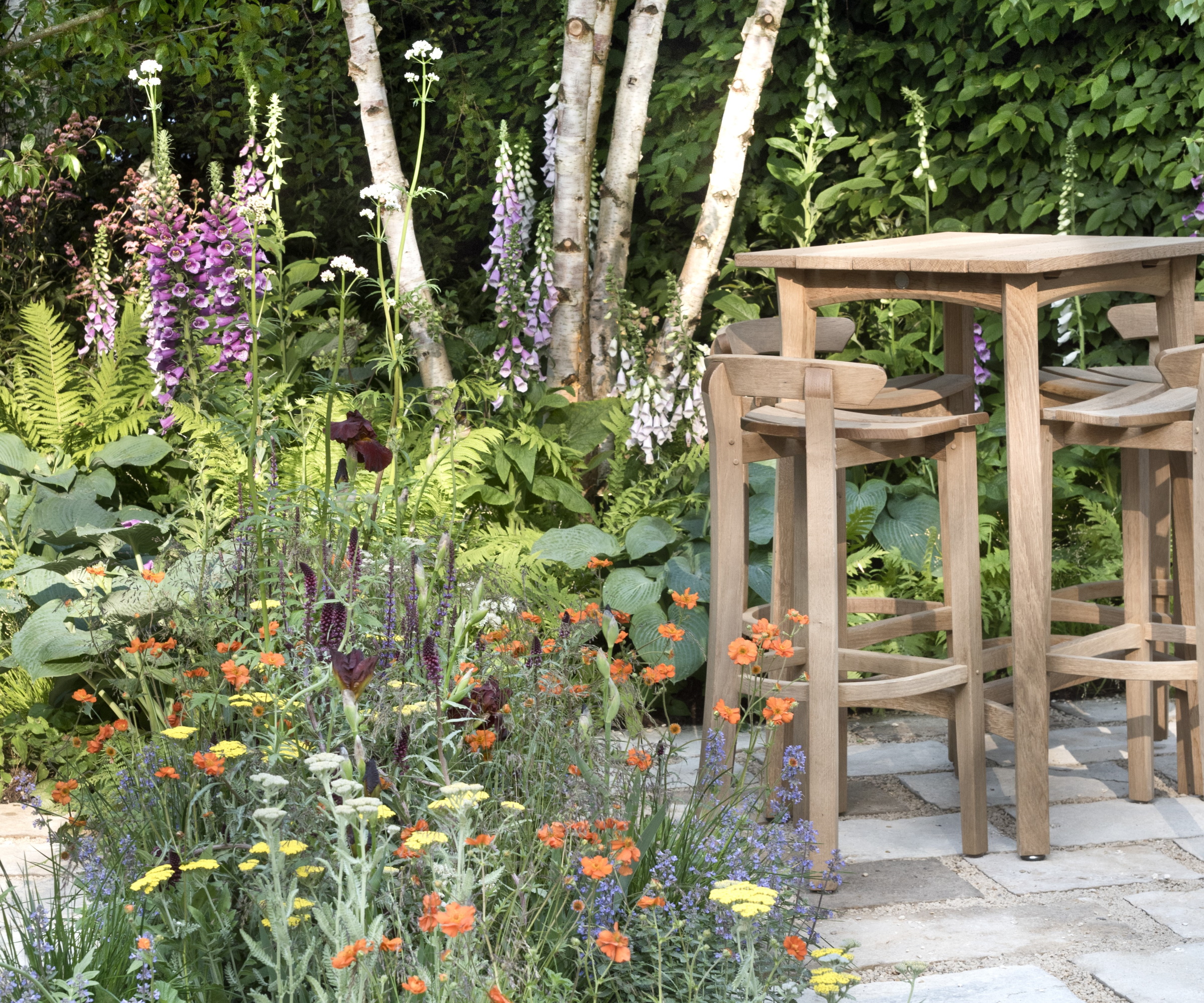
'While you can grow geums from seed, germination can be slow. For best results and known flower color, it’s better to start with starter plants or from divisions.' notes Alex.
If you want to go ahead in any case, you can purchase geum seeds, like these beautifully bright Geum 'Lady Stratheden' seeds available at Amazon, and sow them indoors anytime from January to April, or directly outdoors in May-July, if the weather is warm.
When and how to prune geums
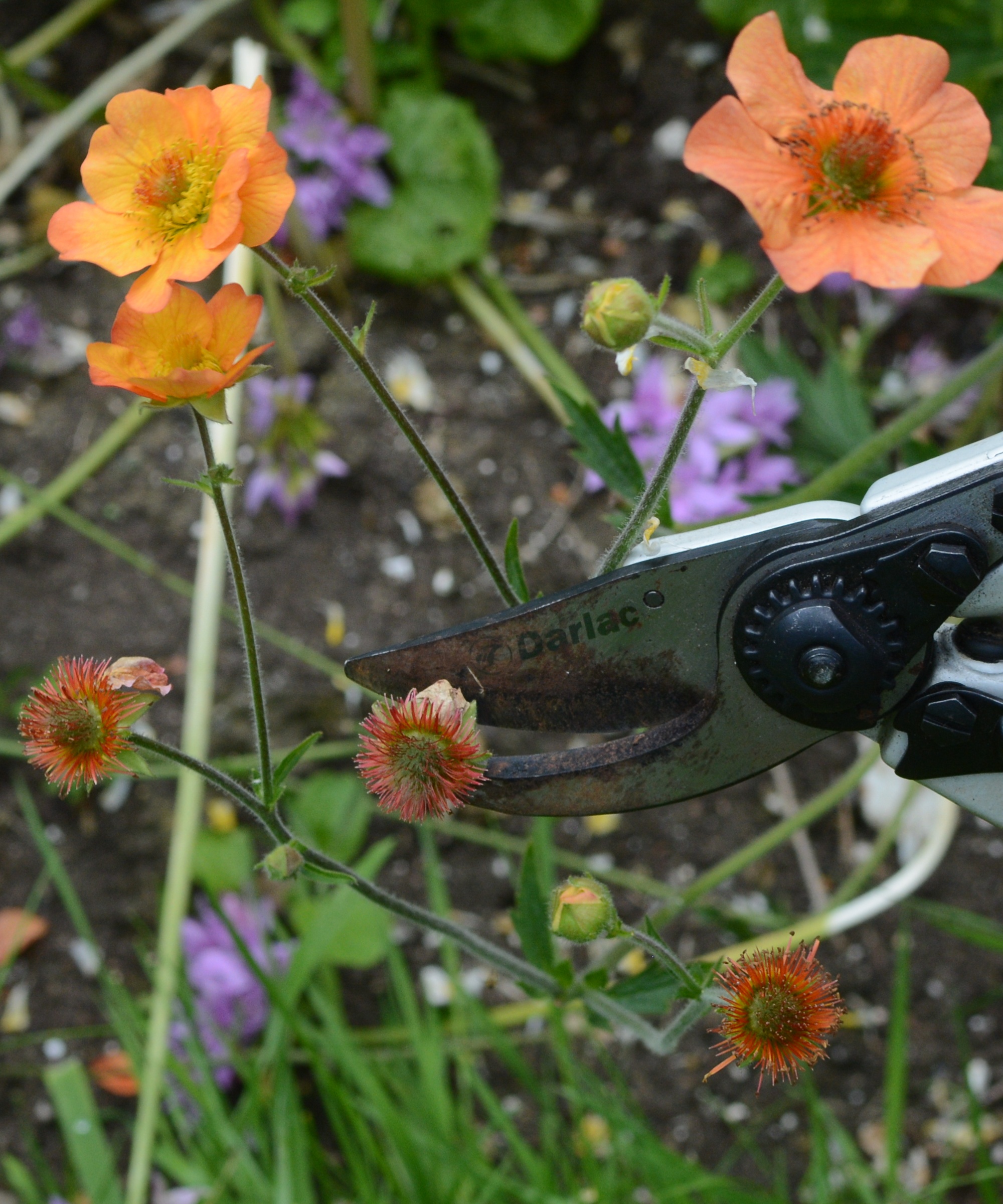
Looked after correctly, geums are capable of regrowing from their established root systems year after year.
The vast majority of geums are semi-evergreen, so healthy foliage can usually be left on over winter. In early spring, when I prune roses, usually around February time, I will also prune geums, so they two tasks are done at once.
Geums belong to the Rosaceae family, which includes roses, so I tend to clump them together in my mind's eye when it comes to pruning. Simply trim back any damaged or dead foliage to encourage new growth in the coming months. This should be a five-minute job. Happily, that is all you need to do.
That said, don't forget over the summer to deadhead. If you don't deadhead, geums tend to sulk, and may stop producing flowers altogether, so get out those secateurs and deadhead.
Don't forget to divide your plants every two to three years. If you don't, they'll become woody and may die. When you divide your plants, you will have two (or more) small plants, which you can plant elsewhere in your garden or give them to friends, if you're so inclined.
The best varieties to grow
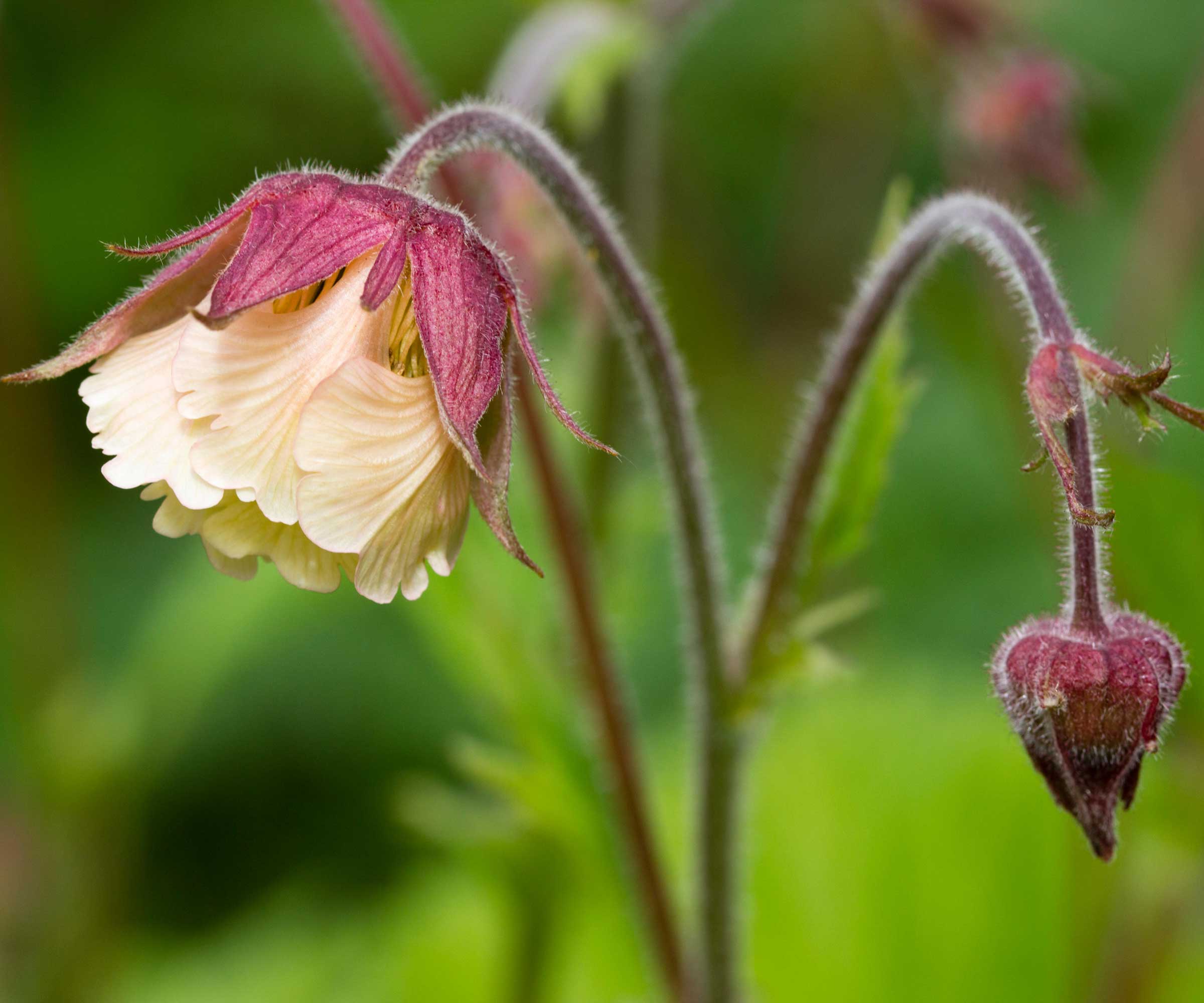
'Geum rivale', otherwise known as 'Water Avens' is one of my all-time favorite Geums. The flower stems and sepals are flushed in a luscious dark red, and the dusky pink or pale orange, drooping flowers appear from spring to midsummer. This Geum adores water, so it works beautifully by a pond or in a wet, boggy, shady border. It is nectar-rich, so attractive to pollinators like bees and dragonflies. You can buy them in nurseries, including those available at Secret Garden Growers.
Here are some of the best Geum varieties to grow:
Geum 'Miss Clamentine', if you love Geum 'Totally Tangerine', then you will simply adore Miss Clamentine. This variety is almost identical to Totally Tangerine, but it has double flowers which are simply far prettier. Bees and butterflies will flock to their flowers, and it will reach 20" tall in zones 4-8.
Geum 'Nonna', perhaps one of the most achingly beautiful geums out there, Geum 'Nonna' has soft peach flowers with teracotta colored edges, which last all Spring and all Summer. They're a little softer and less visually arresting than brighter iterations, so they're the ones to go for if you prefer a more muted palette.
Geum 'Blazing Sunset' has a mesmerising color, a deep, temptress-red that has to be seen to be believed. It looks phenomenal when planted amongst Salvia Hot Lips, bright lime green Alchemilla mollis, and towering stems of lolling foxgloves.
Geum 'Mai Tai' has the most beautiful antiqued, gently stained-looking pink flowers. It prefers a cool, shady spot, despite its sunny appearance. It's semi-double ruffled blooms that look like little petticoats and are jaw-droppingly beautiful, brought inside as cut flowers and added to vases of roses and catmint.
Whilst geums can tolerate a wide range of temperatures, they generally prefer cool to moderate climates. They're hardy in USDA hardiness zones 4 to 9, though a word of warning before you get stuck in: before selecting the perfect geums for your garden, check the hardiness zone recommendations for the specific cultivar you're interested in.

Sophia Pouget de St Victor is the UK Content Editor at Homes & Gardens, bringing readers the latest trends, expert insights, and timeless design inspiration tailored to a UK audience. With a background in luxury interiors and a qualification in Garden Design from London, she has a passion for creating spaces with character and emotional depth. Sophia gravitates toward interiors that defy definition, valuing individuality and effortless elegance. She lives in West London with her partner, two mischievous terriers, and a plump cat named Lettuce.
You must confirm your public display name before commenting
Please logout and then login again, you will then be prompted to enter your display name.